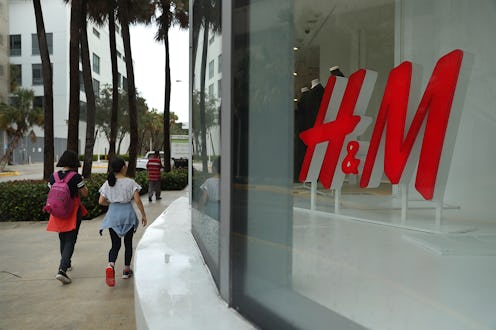Fashion
Another Controversial Move by H&M Targets Ethiopia

H&M may be the best place to get your fast fashion on, but the sleek Swedish retailer has engaged in numerous controversial decisions over the years, including a Native American headdress, irritatingly large NYC billboards and — shocker — Photoshopping scandals. Here's another, much more serious issue to add to the list: H&M is expanding its supplier base into Ethiopia, a country infamous for substantial human rights violations and extensive use of child labor.
As H&M continues to expand their number of stores worldwide, and labor costs in Asia increase, the company is turning to eastern Africa for the cheap labor fix it needs. The Wall Street Journal reports that H&M may be looking to source one million garments a month from Ethiopia, and according to spokeswoman Camilla Emilsson-Falk, test orders have been placed with Ethiopian suppliers, and new factories will be built this fall.
The good news is that Ethiopia, one of the world's poorest companies, has been experiencing strong economic growth over the past ten years, and was the 12th fastest-growing economy in the world in 2012. As the country looks to expand its garment and textile industry —the Ethiopian government has set a target of $1 billion in textile exports by 2016 — this move by H&M would clearly be a beneficial one for the Ethiopian garment industry and their economy in general.
The bad news is that Ethiopia's human rights have "sharply deteriorated over the past few years," according to Human Rights Watch. The country is guilty of forced displacement of villagers, torture, and aggressive targeting of opposition members, human rights activists, media, political activists, and any other dissenters, including two Swedish journalists who were detained in an Ethiopian prison for 14 months (H&M is a Swedish company). Most troublingly of all, Ethiopia has one of the highest rates of child labor in the world. According to the International Rescue Committee, almost 60 percent of children in Ethiopia are already working, many of them in the textile and garment industry.
Spokeswoman Emilsson-Falk says H&M is aware of Ethiopia's controversial situation. "We did an extensive risk analysis for Ethiopia, looking at human rights and environmental issues in the country. We have worked with improvement of working conditions in our production countries for many years and will apply our experience when establishing relationships with the Ethiopian suppliers," she told AFP.
But child labor is a very serious matter, and one that's often swept under the rug by corporations and factories alike. If H&M does begin sourcing labor from Ethiopia, it's our job as consumers to demand more transparency than ever from the retailer. Otherwise, that $15 blazer just isn't worth it.
Image: Joe Raedle/Getty Images